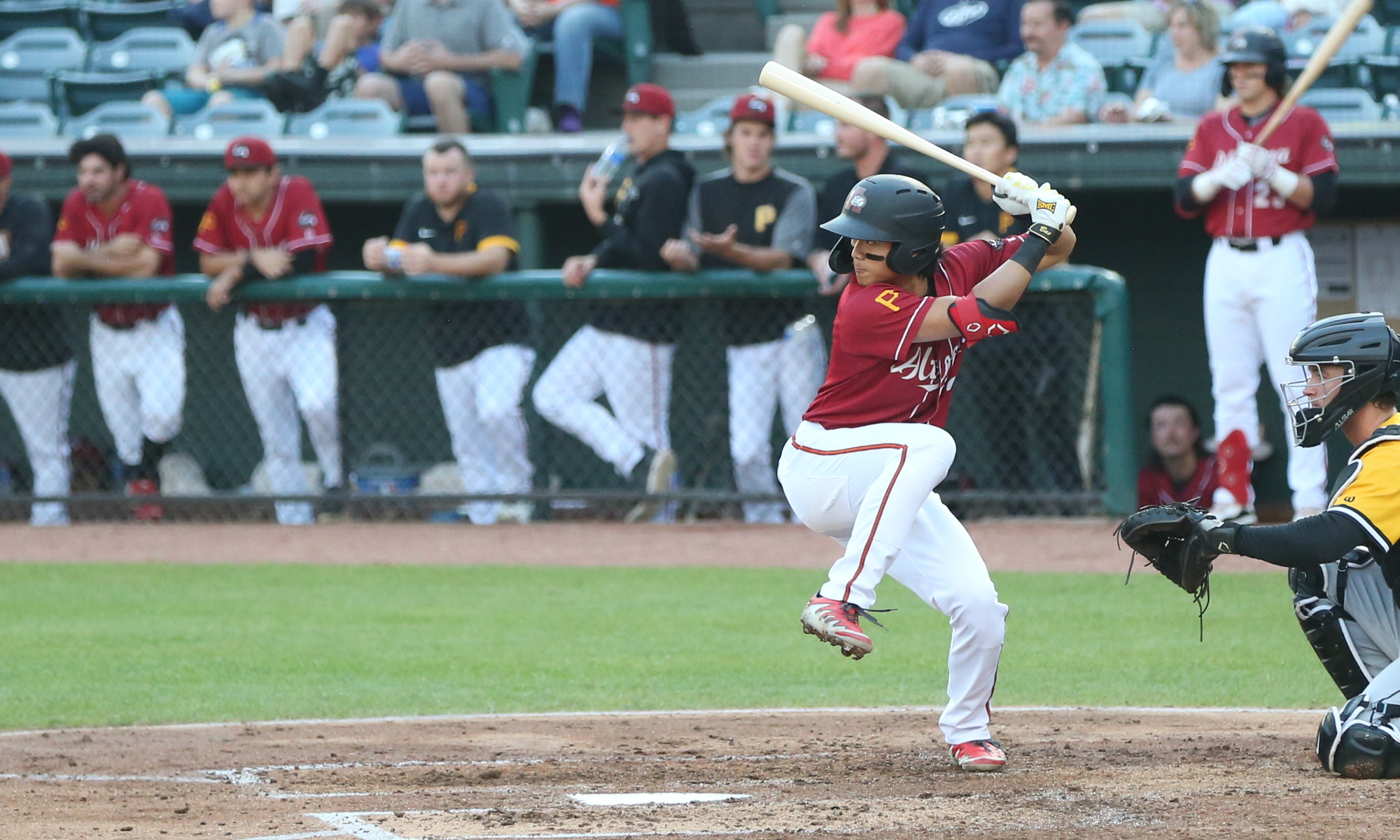The Pittsburgh Pirates had what has been described as a “cookie cutter” approach to player development under former General Manager Neal Huntington, and former leaders of player development Kyle Stark and Larry Broadway.
This approach would largely focus every single player on the same drills and the same development requirements, even if it didn’t make sense for their individual careers, or led to negative results with their body and game. The approach would also lead to rules which restricted how a player could look on the field, as well as how much outside development help was incorporated into a player’s plan.
To get an idea of how things have changed, here are three examples of changes away from the old development system to the new, individualized system.
Strength Can Be a Weakness
Ji-Hwan Bae isn’t a big player. He’s measured at 6′ 1″, 185 pounds, and strength and power is not a big asset in his game.
Bae was one of many players who saw negative impacts to his body from the old universal strength program the Pirates had under their former player development system.
“The guys used to say ‘You’ve got to get bigger and stronger and focus on hitting ball harder,'” Bae said through an interpreter. “Right now it’s ‘You’ve got to strengthen your strengths.’ The speed on the bag, get on base, and things like that.”
The concept here is simple. Bae isn’t projected to be a power hitter. He’s always been projected to be a speedy, leadoff hitting middle infielder at best. Having him focus on a mandatory strength program that wasn’t build specifically for him isn’t a way to ensure he becomes that speedy on-base machine.
The workouts for Bae led to him losing weight, due to a tireless cycle during the season. Bae would find himself tired after coming back from an away game, feeling unable to lift. He’d still lift, and would feel more tired after that session, rather than letting his body recover.
“Everything is now optional,” Bae said. “We can do whatever I want. If I feel tired, I can take a rest. If I feel good, I feel good to go.”
The irony of this is that Bae added more strength in 2021 under the new development approach, possibly because he had more time to recover. He hit seven home runs in Altoona this year, with a .135 ISO. He followed that with two homers and a .130 ISO in the Arizona Fall League. And he used the time normally spent weight lifting to focus on other areas of his game, including a lot of infield fielding drills this year with Altoona bench coach Gary Green.
“It’s way more satisfying,” Bae said of the current development approach. “I feel more comfortable playing.”
Dress However You Want
The Pirates treated individual uniform choices as a right exclusive to MLB players under Kyle Stark’s development system. Every player had to follow the same rules on how to wear their socks, their pants, and their facial hair. Only MLB players had the ability for individual uniform choices.
“There were some rules [in the old days] where you had to be clean shaved and had to wear high pants in the game, and now you can be whatever,” Altoona outfielder Matt Fraizer said of the old dress code. “I feel like that definitely has helped to let players be themselves, and let players be a bit looser and have more fun, which is going to get the best out of every player.”
The Pirates have been focusing on developing their players to play the game more implicitly, meaning relaxing and trusting their instincts. It’s difficult to do this when you’re in a restrictive uniform, unable to make any adjustments for personal comfort or expression. The Pirates did away with some of this approach by the end of Stark’s run overseeing player development, but the new dress code is much more free for the players.
Bring Your Own Information
In the past, I’d talk with players who worked with personal trainers, or picked up new tips and approaches in the offseason. That was encouraged by the front office, but wasn’t always given priority in the player’s development plan over what the development staff had planned.
The new development system incorporates so much information from the Pirates’ side, but allows for players to have more of a voice and implement techniques from outside of the organization.
Greensboro starting pitcher Michael Burrows noted the difference between the old and new systems.
“It just felt like you couldn’t really bring much to the table,” Burrows said of the old system. “Everything that was on the table was what they were going to feed you. It was tough, but it’s so much better now. I’m really excited in the direction we’re going in.”
In an age where pitchers can watch instruction videos of other pitchers on their phones, and where individualized baseball development camps are popping up with all sorts of technology to help the players understand their game, it should be encouraged for players to go this extra mile. It’s hard to encourage that process when that outside help doesn’t get incorporated into the development plan. Fortunately, that’s no longer the case.
This Week on Pirates Prospects
The Pirates Are Implementing an Individualized and Collaborative Player Development System
Three Examples of Individual Player Development and How They Changed in the Pirates System
The Players Are Driving the Bus, But the Pirates Development Coaches Are the GPS
Looking Ahead at the Pirates’ 2022 System: Bradenton Marauders
The Forgotten Prospect: Cody Bolton Set For A 2022 Revenge Tour
Electric Jared Jones Ahead Of The Curve In Debut Season
Randy Romero Shows Better Results Through Consistent Play and a More Focused Approach



